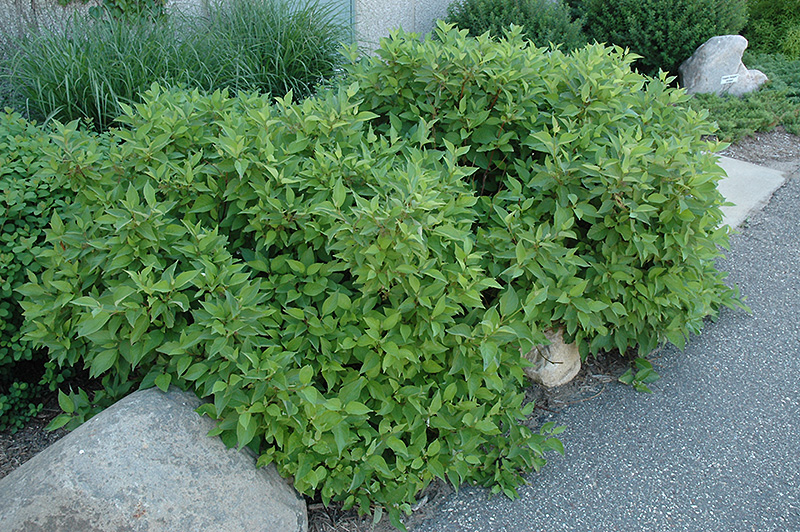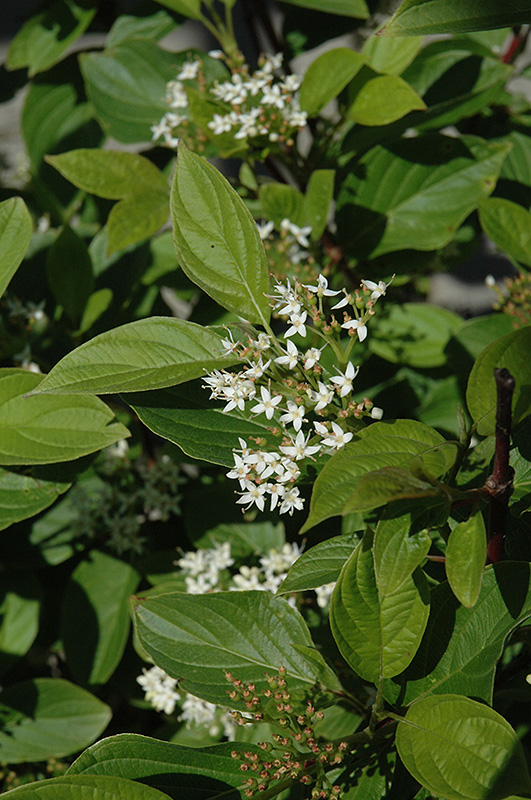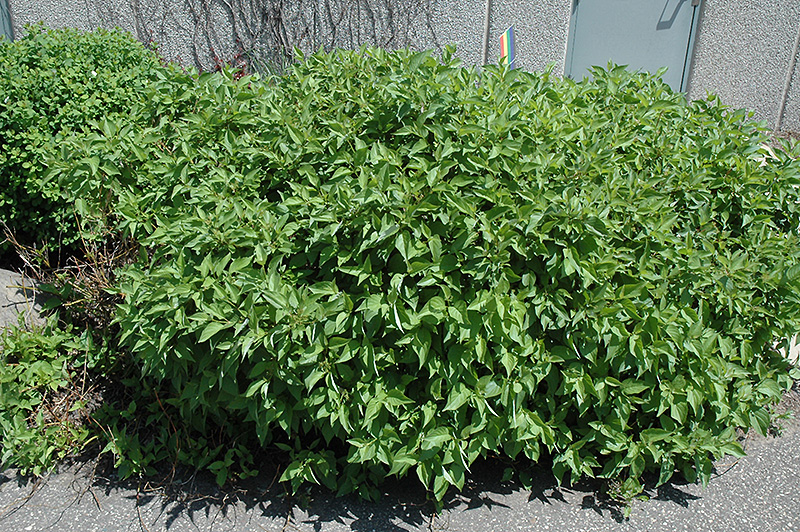Dogwood, Firedance Red Twig Cornus sericea 'Bailadeline' Height: 4 feet Spread: 5 feet
Sunlight:
Hardiness Zone: 2a Other Names: C.stolonifera, Red-Osier Brand: First Editions Description: A compact and very hardy shrub, ideal for general garden use in northern landscapes; showy red stems stand out against the winter snow, excellent for massing; great for water's edge, border, or bed Ornamental Features Dogwood, Firedance Red Twig has clusters of white flowers at the ends of the branches in late spring. It has green deciduous foliage. The pointy leaves turn an outstanding brick red in the fall. It produces white berries in late summer. The red branches are extremely showy and add significant winter interest. Landscape Attributes Dogwood, Firedance Red Twig is a multi-stemmed deciduous shrub with a more or less rounded form. Its average texture blends into the landscape, but can be balanced by one or two finer or coarser trees or shrubs for an effective composition. This shrub will require occasional maintenance and upkeep, and should only be pruned after flowering to avoid removing any of the current season's flowers. It is a good choice for attracting birds to your yard. It has no significant negative characteristics. Dogwood, Firedance Red Twig is recommended for the following landscape applications; Planting & Growing Dogwood, Firedance Red Twig will grow to be about 4 feet tall at maturity, with a spread of 5 feet. It tends to fill out right to the ground and therefore doesn't necessarily require facer plants in front. It grows at a medium rate, and under ideal conditions can be expected to live for approximately 20 years. This shrub does best in full sun to partial shade. It is quite adaptable, prefering to grow in average to wet conditions, and will even tolerate some standing water. This plant should be periodically fertilized throughout the active growing season with a specially-formulated acidic fertilizer. It is not particular as to soil type or pH. It is highly tolerant of urban pollution and will even thrive in inner city environments. This is a selection of a native North American species.![]()
![]()
![]()
![]()
![]()
![]()
![]()
![]()
![]()
![]()
![]()
![]()
![]()
![]()
![]()



